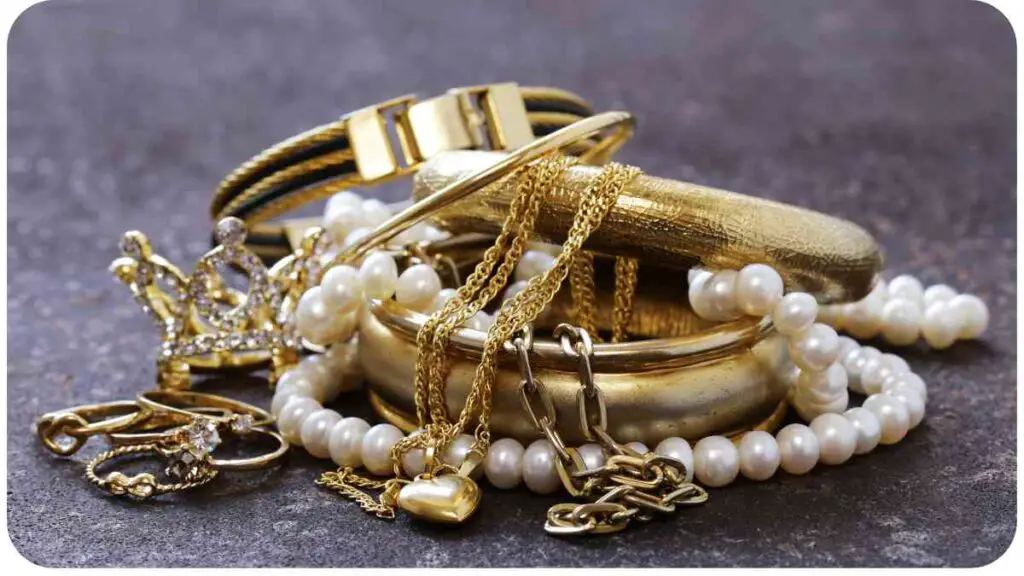Have you ever stumbled upon an object of unknown origin and wondered about its significance? Identifying found objects can be an intriguing yet challenging task. In this comprehensive guide, we will explore various tips and techniques to help you unravel the mysteries behind these objects.
Whether you are an amateur treasure hunter or simply curious about the history and value of found items, this article will provide you with valuable insights and practical advice.
| Takeaways |
| Tips for identifying found objects |
| Importance of identifying found objects |
| Initial evaluation of physical characteristics, material composition, and markings |
| Research and investigation through online resources, public records, and expert opinions |
| Consultation with specialists such as appraisers and curators |
| Common types of found objects: jewelry, antiques, artwork, archaeological finds, coins, and historical documents |
| Best practices for identification: document and photograph, seek expert opinions, conduct comparative analysis, explore historical context |
| Case studies highlighting successful identification of objects |
| The joy of uncovering history through found objects |
| Further reading resources for in-depth understanding |
| FAQs addressing common questions related to identifying found objects |
2. What are Found Objects?
Found objects refer to items that are discovered unexpectedly or unintentionally, often in outdoor or historical settings. These objects may range from everyday items to rare artifacts, each holding its own story and potential value.
They can be unearthed while metal detecting, exploring old buildings, or even during everyday activities like gardening. Identifying these found objects not only satisfies our curiosity but also contributes to our understanding of the past and cultural heritage.
Exploring antique treasures unveils rich histories and hidden stories. Dive into the past and discover The Fascinating History Behind Your Antique Finds to connect with the narratives that make each find truly captivating.
3. Why is Identifying Found Objects Important?

Identifying found objects is crucial for several reasons. Firstly, it allows us to uncover the historical and cultural significance of an object, providing valuable insights into our past. Secondly, knowing the value and authenticity of a found object can help individuals make informed decisions, especially if they plan to sell or donate the item.
Lastly, identification enables proper preservation and protection of objects that may have archaeological or historical importance.
4. The Process of Identifying Found Objects
The process of identifying found objects involves careful evaluation, thorough research, and consultation with experts. Let’s explore the necessary steps in detail.
4.1. Initial Evaluation
Before diving into extensive research, it is essential to conduct an initial evaluation of the found object. This evaluation should focus on three key aspects: physical characteristics, material composition, and markings or engravings.
4.1.1. Physical Characteristics
Carefully observe the object’s physical characteristics such as size, shape, and weight. Take note of any notable features or peculiarities that may assist in identification.
Navigate the world of treasure hunting with precision using Google Maps. Learn how to optimize your searches with How to Use Google Maps for Treasure Hunting and turn geographical insights into valuable discoveries.
4.1.2. Material Composition
Determine the material composition of the object. Is it made of metal, ceramic, wood, or another material? Understanding the material can provide clues about its origin and age.
4.1.3. Markings and Engravings
Inspect the object for any markings, engravings, or inscriptions. These can include symbols, numbers, initials, or manufacturer’s marks. Note them down, as they can offer valuable information about the object’s origin, maker, or purpose.
4.2. Research and Investigation
Once you have gathered the preliminary information, it’s time to delve into research and investigation. Several resources can aid your quest for identification.
4.2.1. Online Resources
Utilize online platforms, databases, and forums that specialize in identifying found objects. Websites like “Found Object ID” and “Antiques Detective” have extensive databases and active communities that can provide valuable insights.
4.2.2. Public Records
Check public records, such as local historical archives or archaeological databases, to search for similar objects. These records often contain valuable
information about artifacts that have been discovered in your area or similar contexts. Compare the characteristics of the found object with documented examples to narrow down potential matches.
Embark on a treasure-hunting journey armed with knowledge. Explore The Best Places for Treasure Hunting: A Complete Guide to uncover diverse landscapes that hold the potential for exciting and rewarding finds.
4.2.3. Expert Opinions
Seek out expert opinions from specialists in relevant fields. This could include historians, archaeologists, appraisers, or curators. They possess in-depth knowledge and expertise that can offer valuable insights into the origin, age, and significance of the object.
4.3. Consultation with Specialists
In some cases, identifying a found object may require professional assistance. Consider consulting specialists who can provide deeper insights and confirm your findings.
4.3.1. Appraisers
If you suspect that the found object holds significant monetary value, consult with a reputable appraiser who specializes in the specific category of the object. They will evaluate its condition, rarity, and market demand, providing you with an estimation of its worth.
4.3.2. Curators
When dealing with potentially historical or culturally significant objects, reaching out to curators at museums or historical societies can be beneficial. Curators can provide expertise regarding specific artifacts and help place them in historical context.
Delve into the allure of ghost towns and master the art of exploration with insightful tips. Read Ghost Town Explorations: Tips and Tricks for Treasure Hunting to enhance your treasure-hunting adventures in abandoned landscapes
5. Common Types of Found Objects
Found objects can span various categories, each with its own unique characteristics and identification challenges. Let’s explore some common types:
5.1. Jewelry and Accessories

Found jewelry and accessories can range from antique pieces to modern trinkets. They may be made from different materials like gold, silver, or precious gemstones. Observe the style, craftsmanship, and any hallmarks to gather clues about their origin and value.
5.2. Antiques and Collectibles
Antique items and collectibles can encompass a wide range of objects, including furniture, porcelain, vintage toys, and more. Consult reference books, online databases, and experts to determine the age, provenance, and significance of these objects.
5.3. Artwork and Paintings
Discovering a hidden painting or artwork can be thrilling. Pay attention to the painting style, signature, and any labels on the back of the canvas. Art historians or art appraisers can assist in identifying the artist and determining potential value.
5.4. Archaeological Finds
In certain locations, finding archaeological artifacts is not uncommon. These can include pottery shards, arrowheads, or other remnants of past civilizations. Consult with archaeologists or local historical societies to identify these objects and contribute to their preservation.
Experience the thrill of the hunt as a beginner in the world of metal detecting. Begin your journey with confidence by absorbing the wisdom shared in The Thrill of the Hunt: A Beginner’s Guide to Metal Detecting. Uncover hidden treasures and build a foundation for success in this exciting hobby.
5.5. Coins and Currency
Unearthed coins or currency can give insights into economic history. Examine the design, symbols, and inscriptions on the coin to determine its age and origin. Numismatists or coin experts can assist in evaluating their value.
5.6. Historical Documents
Discovering old documents, such as letters, manuscripts, or maps, can offer glimpses into the past. Assess the handwriting style, paper type, and any relevant names or dates mentioned. Archivists or historians can aid in deciphering the content and assessing the document’s historical significance.
6. Best Practices for Identification
To enhance your chances of successfully identifying found objects, consider following these best practices:
6.1. Document and Photograph
Keep a detailed record of your found object by documenting its physical characteristics, measurements, and any peculiarities. Take clear photographs from different angles to assist in future research and discussions.
6.2. Seek Expert Opinions
Don’t hesitate to reach out to experts in the field for their insights and opinions. They can provide specialized knowledge and guide you in the right direction for identification.
6.3. Conduct Comparative Analysis
Compare your found object with similar items from established collections, reference books, or online resources. Look for similarities in style, materials, and markings to narrow down potential matches.
6.4. Explore Historical Context
Research the historical period and cultural context associated with the found object. Understanding the societal practices, artistic styles, and technological advancements of a specific time can provide crucial clues for identification.
In the next part, we will dive deeper into the identification process by presenting a few intriguing case studies that shed light on the art of uncovering the past through found objects.
7. Case Studies
7.1. Uncovering a Rare Antique
In the small town of Oakville, a metal detectorist stumbled upon what appeared to be a rusty piece of metal. Curiosity led him to consult with a local appraiser, who identified it as an intricately designed 18th-century pocket watch. Further research revealed that this particular model was manufactured in limited quantities, making it a rare find worth several thousand dollars.
7.2. Solving a Mysterious Artifact
During routine construction work in a bustling city, workers unearthed a peculiar object with mysterious markings.
They turned to a team of archaeologists who conducted a thorough investigation. The artifact was identified as a clay tablet dating back to an ancient civilization. Through expert analysis and deciphering the inscriptions, it was revealed to be a piece of a long-lost literary text, providing valuable insights into the cultural and historical practices of the time.
7.3. Discovering Lost Artwork
In a dusty attic of an old family home, a forgotten painting was discovered. The owners contacted an art historian to help identify the artist and determine the artwork’s significance. With meticulous examination of brushstrokes and careful research into the artist’s style, it was revealed to be an early work of a well-known painter, increasing its value and adding to the artist’s oeuvre.
These case studies highlight the importance of careful evaluation, research, and expert consultation in identifying found objects. Each object holds hidden stories and historical significance that, when uncovered, enrich our understanding of the past and the world around us.
8. Conclusion
Identifying found objects may seem like an overwhelming task, but with the right approach and resources, it becomes an engaging and rewarding endeavor. By following the steps outlined in this comprehensive guide, conducting thorough research, consulting experts, and utilizing online databases and public records, you can unlock the secrets and stories behind these intriguing objects.
Remember to document and photograph the objects, seeking expert opinions when needed, conducting comparative analysis, and exploring the historical context to increase your chances of accurate identification. Embrace the journey of discovering history through the relics of the past and contribute to our collective knowledge and appreciation of our cultural heritage.
Further Reading
Here are some additional resources that provide valuable information on identifying found objects:
- Real Objects English: This resource offers tips and techniques for introducing real objects to toddlers as a way to enhance their language development and sensory experiences.
- Object Tracking Guide: This comprehensive guide explores the concept of object tracking, providing insights into its applications, technologies, and challenges.
- Detecting Small Objects: This blog post delves into the technical aspects of detecting small objects using computer vision and machine learning, providing useful information and tips for developers and researchers.
FAQs
Here are some frequently asked questions (FAQs) related to the identification of found objects:
How can I determine the value of a found object?
Determining the value of a found object can be challenging. It is recommended to consult with reputable appraisers or experts in the specific category of the object, as they can evaluate its condition, rarity, and market demand to provide an estimation of its worth.
What resources can help me identify archaeological artifacts?
When identifying archaeological artifacts, it is helpful to consult with archaeologists, local historical societies, or even online databases of archaeological finds. These resources can provide guidance and access to information about similar artifacts.
Are there online communities or forums for discussing and identifying found objects?
Yes, there are online communities and forums dedicated to discussing and identifying found objects. Websites such as the “Found Object ID” and “Antiques Detective” have active communities that can provide insights and advice based on their collective knowledge and expertise.
How can I preserve and protect a potentially historically significant found object?
If you believe you have found a historically significant object, it is essential to handle it with care and avoid cleaning or altering it before consulting with experts. Contacting curators at museums or historical societies can help in preserving and protecting such objects, as they have the necessary knowledge and resources.
Can I sell or donate a found object?
Yes, you can sell or donate a found object if you choose to. However, it is important to assess its value, understand any legal considerations, and ensure proper documentation and provenance if you decide to sell or donate it. Consulting with appraisers or professionals in the specific field can assist in making informed decisions.

